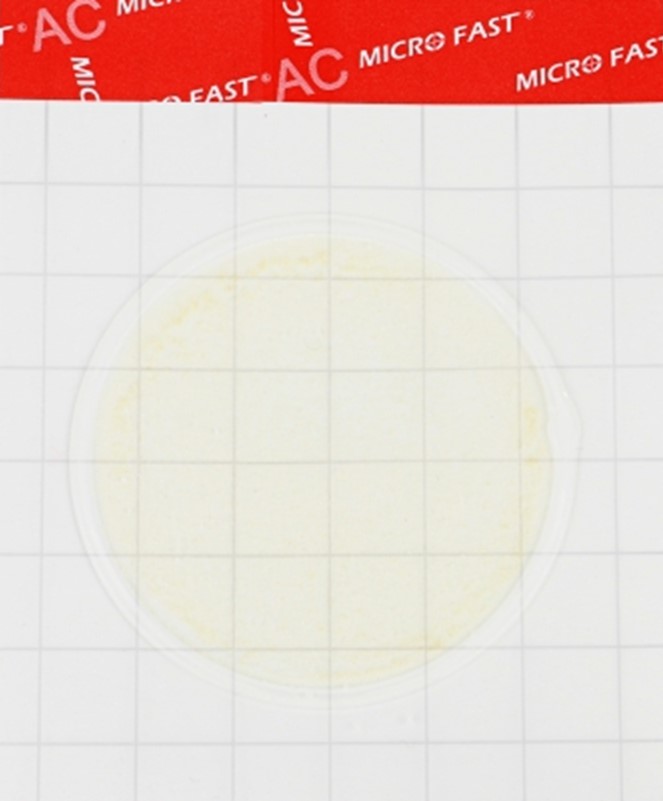Sister Khatyn. Marks 80 years since the tragedy in Dalva

Photo is illustrative in nature. From open sources.
On June 19, 1944, Dalva was burned along with its inhabitants during the German punitive operation "Cormorant", 44 people died in the fire, including 29 children, 13 women and two men. On the site of a burned village, in memory of its inhabitants in the Logoisk district of the Minsk region, the memorial architectural and sculptural complex “Dalva” was erected. it is located on the 77th km of the Minsk - Vitebsk highway .
A sunny morning that became Black Monday
From the very beginning of the Great Patriotic War, the village of Dalva found itself behind German lines. The men went to the front or joined the partisans, leaving only the elderly, women and children in the village . The Dalvinians actively helped the partisans, but they were not destined to wait for the bright day of liberation. The partisans cut the field cable near the village, thereby disrupting telephone communications. From that moment on, the fate of the village was sealed. A few days before the liberation of Belarus, the German occupiers burned this settlement along with its inhabitants.
The only surviving witness to the tragedy, Nikolai Petrovich Girilovich, who miraculously managed to survive, recalls what all happened on an early sunny morning. The children were still sleeping; none of the local residents knew that this morning would be their last. Covered trucks emerged from the forest and stopped on the outskirts of Dalva. Soldiers with machine guns at the ready began to jump from the cars. They surrounded the village in a tight ring. All residents were herded to the outskirts of Vasil Kukharenok’s house. The children, who had just been awakened from their beds, were crying. The punishers, spurring everyone on with shouts and rifle butts, began to drive people into the hut. The doors were locked. They threw a grenade into the house. A flame broke out. Those who managed to escape from the fire were killed by machine gun fire from punitive forces not far from the burning house. Some boys tried to get out through the roof, but the Nazis shot at them, and the children fell into the flames. Having dealt with the civilians, the executioners set fire to the village on both sides.
The eldest of the dead, grandfather Kupriyan, was eighty years old. And the youngest, Kostya Kukharenko, is about two. Of the 29 children, 17 girls and 12 boys were burned. 19 children were not yet 10 years old. A boy and a girl from other villages were burned along with the Dalvinians. This is Yuzik Grin, who helped his relative with the housework, and Olya Falkovich, she came to visit Nastasya Kukharenok the day before, on Sunday.
An accident helped Nikolai Girilovich, who was 13 years old at that time, to avoid a terrible fate. Early in the morning his mother woke him up and asked him to replace his father, who was tending a horse. Thanks to this, the history of Dalva is not forgotten and is passed on from generation to generation.
“I still remember the horror of that terrible June day, Black Monday, when Dalva was dying, dying painfully, hard... There was a thick, heavy smell over the cooling ashes. The wind carried it to nearby and distant villages. This smell made it impossible to breathe death and grief,” he shares his difficult memories.
For ten days and nights, charred corpses and bones lay in the open air. It was raining and the sun was shining. There was no one to bury... On the afternoon of June 29, Red Star tanks appeared. Residents from the surrounding villages came to the scene of the tragedy, as well as partisans to bury the remains of the burned Dalvin residents. Not far from the house where the villagers were burned, a mass grave was dug. People carefully pulled away the black brands, found them underneath, and brought them into a huge wooden box for those they called Dalvinians. People were recognized not by their faces, but by the remains of their clothes and shoes. Soon, three wooden crosses of different heights were erected: to the older, middle and younger generations of the burned Dalvinians. The mass grave was then surrounded by a wooden fence.
Unburnt memory
The initiator of the work to perpetuate the tragedy in Dalva was Nikolai Petrovich Girilovich, who devoted his entire life to preserving the memory of his fellow villagers. In 1955, a monument was erected on the site of a mass grave containing the remains of residents of the former village. In 1963 it was replaced by an obelisk with a five-pointed star. And in 1972, the Belarusian State Theater and Art Institute announced a competition for the best design of a monument to the village of Dalva. The winner was a third-year student in the sculpture department of the art faculty, a student of the People's Artist of Belarus, sculptor Andrei Bembel, Vladimir Terebun.
The whole country helped. The memorial was erected using the folk construction method. Gradually it acquired a new appearance, until eventually it began to look the way we see it today. Opened on July 15, 1973, the complex follows the layout of the former village of Dalva. The composition of the memorial consists of individual elements freely placed in space.
In the center of the composition is the sculpture "Mother and Child". The four-meter figure of a woman is located on a low pedestal. The boy pressed himself close to his mother, wrapping his arms around her. The mother's face is stern, but one can read wisdom and deep faith in people and in the future. Three black charred beams rise behind the backs of the woman and child, symbolizing the site of the fire. There is a version that the grieving woman depicted and the child clinging to her feet are Nikolai and his mother.
The Wall of Remembrance lists the names and ages of all residents who died. Along the former street there are five symbolic log buildings made of gray-ash-colored concrete. On the steps in front of these log houses there are sculptural household items: a children's doll, a MILK jug, a sickle, a violin, a ball of thread. All these are things that remind us that people lived here, whose lives were taken away with inhuman cruelty. Also, 44 white-trunked birch trees were planted along the street.
On the memorial stone there is a tablet with the quatrain:
“The enemy of the Cherven couple has saved us -
Dzyadov, janchyn, padletka and dzyatsey.
Grant, good people, for the fact
that we do not kill you like a gassy.”
The memory of the village residents is also immortalized on the memorial plates of the Khatyn necropolis.
In 2009, a new exhibition “Dalva: Heroism, Tragedy, Mercy” was created on the territory of the memorial, which contains archival photographs and documents telling about the history of the village, starting from the end of the 17th century.
The tragedy of Dalva in the hearts of people
People from all over Belarus and from abroad come to visit the memorial complex "Dalva", which is located thirty kilometers from Khatyn. Wreaths and flowers are laid at the memorial - a tribute of respect and love to those who died at the hands of the Nazis. According to tradition, every year, starting from the opening day of the complex, the Day of Remembrance of the Victims of Fascism is celebrated here, services and rallies are held in memory of the residents of the burned village. Also, the “Minsk - Khatyn - Dalva” campaign rally takes place annually.
The tragedy of Dalva resonates with pain in the hearts of people, reminding them of how important it is to prevent the outbreak of a new war. People take away from here an immense love for life and hatred for war.
Dalva's tragedy is also reflected in the music. Composer Dmitry Smolsky wrote the melody for the song “Dalva” based on poems by Vladimir Karizno. It is performed by Honored Artist of the Republic of Belarus Tamara Raevskaya. The poet Ales Badak dedicated a song to Dalva.
The memorial complex "Dalva" is included in the State List of Historical and Cultural Values of the Republic of Belarus. Nowadays it is a branch of the State Memorial Complex "Khatyn".
Documents about the tragedy of Dalva and the memorialization of the memory of its inhabitants are stored in the funds of the National Archives of the Republic of Belarus. A number of materials were published in the archival collections “The Tragedy of Belarusian Villages” (2011) and “Khatyn Necropolis” (2014), and were also posted in the public domain as part of the archival Internet project - the database “Belarusian Villages Burnt During the Great Patriotic War” Patriotic War." Currently, work is underway in the country to assess the scale of the genocide of the Belarusian people.
Read together with it:
- Мусор под окнами и антисанитария в квартире. Какая ответственность грозит за нарушение правил проживания3 октября, Минск. Нарушать правила пользования жилыми помещениями противозаконно. Однако проблема остается актуальной. За январь-август этого года судами Минска рассмотрено 156 дел о нарушении правил пользования жилыми помещениями. Это около 1% от рассмотренных судами столицы дел об административных правонарушениях. Какая ответственность предусмотрена за такие административные правонарушения, расс...
- О самых распространенных причинах пожаров рассказали в МЧС2 октября, Минск. О самых распространенных причинах пожаров рассказал начальник главного управления надзора и профилактики МЧС Дмитрий Турчин на "Предупреждение чрезвычайных ситуаций в осенне-зимний период. Профилактика пожаров и гибели людей от них", которая прошла в БЕЛТА. "В республике наблюдается рост количества пожаров на 7,7%, и на 1......
- Премьер Финляндии призвал ЕС быть оборонным союзом, а не торговым блокомЧтобы избежать потенциальной угрозы от «враждебных государств», Евросоюз должен укреплять оборону и сотрудничать в данной сфере, заявил финский премьер Орпо. Он отметил, что это не будет значить, что Брюссель «вытесняет» НАТО Петтери Орпо Евросоюз должен взять на себя «беспрецедентные полномочия», чтобы защититься от «растущих угроз». Об этом сказал премьер-министр Финляндии Петтери Орпо, сообщает...





























































